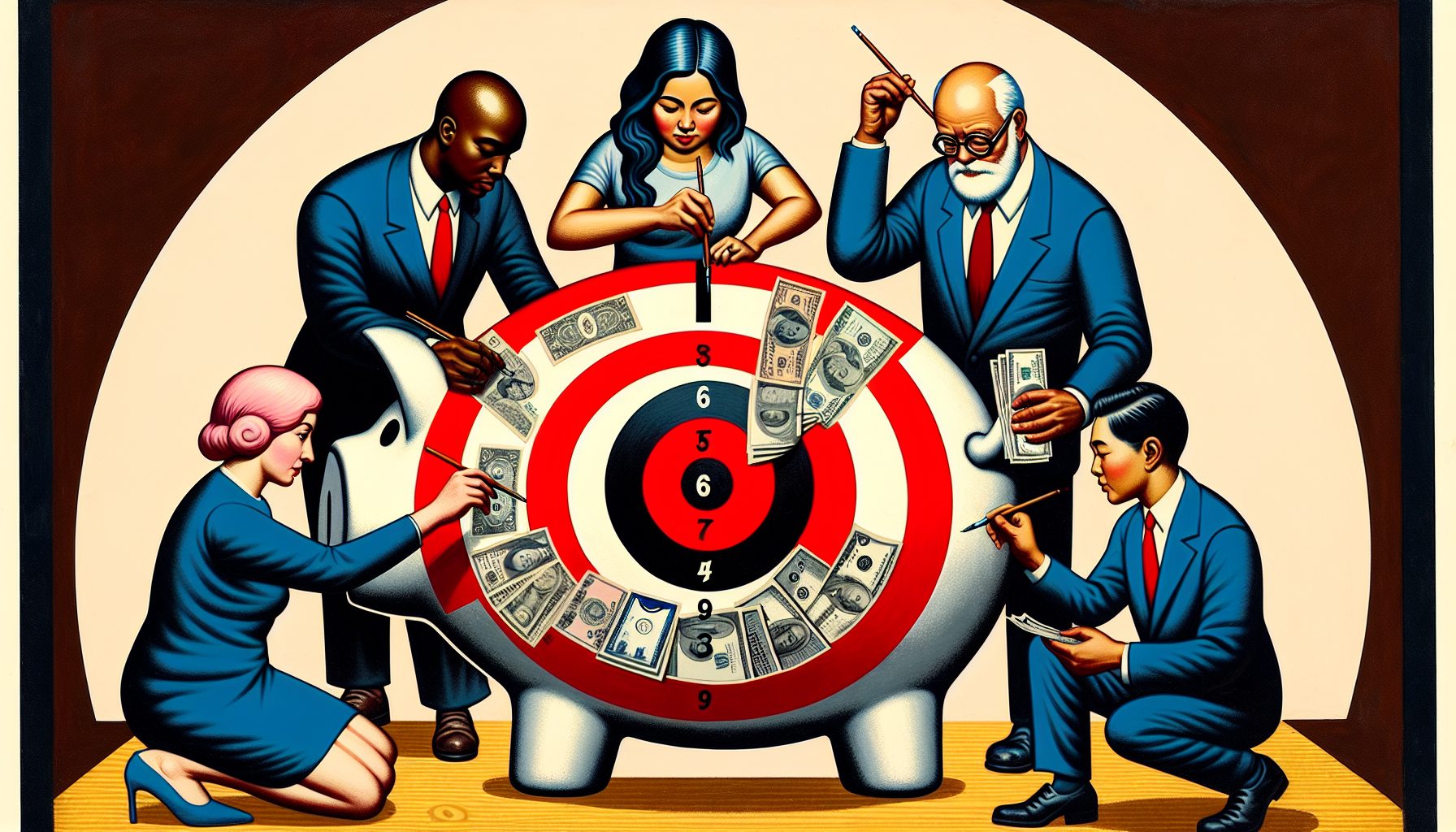Procter & Gamble markets some of the biggest brands in store aisles across the country, from Crest toothpaste to Pantene shampoo to Charmin toilet paper. To date, the company hasn’t begun to figure out the physics—or the business case—of radio waves and how they can help move its products more efficiently to retail outlets. But that’s about to change.
Procter & Gamble will be busy in the first months of 2004 determining how radio-frequency identification systems work. As one of Wal-Mart’s top 100 suppliers, Procter & Gamble faces a January 2005 deadline to place tags containing chips and tiny antennae on the cases and pallets of household products shipped to the world’s largest retailer.”We expect to be testing and learning with several pilots starting in the first half,” says Milan Turk, Jr., director of global consumer e-business at Procter & Gamble.
Procter & Gamble’s plan is to start with two test programs at undisclosed locations. One will focus on identifying where it might earn a return on installing these systems, Turk says. The second will concentrate on identifying technical pitfalls.
The first pilot will focus on a paper product, perhaps Bounty towels, since paper doesn’t block radio waves. The second will include shampoo, since liquid can affect the ability of radio waves to reach the chips and pull out the numbers that identify a pallet’s contents. Future pilots will include other products.
Experts say other consumer-goods giants, such as Unilever and Gillette, are taking a similar approach.
“A lot of companies will soon be moving in fast-pilot mode,” says Bruce Hudson, an analyst at Meta Group in Stamford, Conn. “And there may not be a business case. It’s a leap of faith.”
But before you take that leap it may help to dispel a few myths.
MYTH 1: There is No ROI for RFID
The “slap-and-ship” crowd views Wal-Mart’s mandate as simply a cost of doing business.
These are companies that plan to place radio tags on their cases and pallets for Wal-Mart’s benefit alone. They don’t presently plan to build their own data-tracking systems to take advantage of the potential efficiencies of the tags.
These suppliers claim there are no clear financial benefits to be had. But a business case can be made. (See “RFID: An Offer You Can’t Refuse,” Workbook, p. 82.)
First step: Figure out how well existing systems perform. Calculate how often your products are out-of-stock in warehouses and retail outlets, how much revenue is lost to shrinkage, what the proper levels of safety stocks are. Then, look for areas of improvement. For P&G’s Turk, the payoff may be the abilities to selectively recall batches of drugs and to improve monitoring of expiration dates.
“The potential for RFID is total supply-chain visibility,” says Simon Langford, manager of global RFID strategies for Wal–Mart. “At the retail level, [RFID would] reduce inventory counting. [Wal-Mart could do] faster receiving and shipping because we’re not having to stop and scan.”
Even with such benefits as theft reduction, reduced labor costs and less inventory in the pipeline, Hudson says suppliers’ goal for the first three years should be to minimize losses from complying with Wal-Mart’s mandate. Most notably, the tags themselves remain expensive. In the absence of industry-wide standards—which have yet to be agreed upon—there aren’t a lot of vendors producing the tags approved by Wal-Mart.Meanwhile, it’s unclear that the ones who are—Intermec, Alien Technology and Matrics—can manufacture tags in the volumes needed to cut costs.
Langford says tags currently run between 15 cents and 65 cents each, well above the goal of 5 cents. That could change as larger players enter the market. Texas Instruments, which pioneered the use of low-frequency tags on cattle and high-frequency tags used by drivers to pay highway tolls, plans to begin commercial production of the tags endorsed by Wal-Mart as early as March, says Bill Allen, marketing and communications manager for TI.
Then there’s all the systems integration and process reengineering to truly utilize data picked up by radio waves. Only efficient companies will benefit. “RFID can make a good process better, but it isn’t going to make a bad process good,” says Hudson.
MYTH 2: RFID Will be Widely Adopted in 2005
Experts say Wal-Mart’s mandate—along with the very different RFID requirements of the Department of Defense (DoD), which are also taking effect in January 2005—is certainly enough to drive adoption of radio tags.
But companies will still utilize bar codes for the foreseeable future—a fact Wal-Mart’s Langford acknowledges. Meanwhile, there are a slew of companies waiting for best practices to emerge before deploying tags. (See Planner, p. 45) Analysts estimate it will take at least three years before a paint-by-numbers guide on how to implement radio systems will emerge, says Hudson.
“Wal-Mart and the DoD are the exception—not the rule,” says Adam Fein, president of Pembroke Consulting, a Philadelphia firm specializing in distribution.Fein’s argument is that wholesale distributors such as Cardinal Health, Sysco and W.W. Grainger aren’t going to be in a hurry to adopt radio identification. Here’s why: Distributors purchase products from manufacturers at bulk discounts. They assume the market risk, reselling the goods for a profit to retailers. With radio identification, it’s possible that these middlemen could be cut out of the process. Manufacturers and retailers would know the balance of supply and demand in real-time and, as a result, could choose to deal directly with each other.
Wal-Mart can more readily force RFID adoption because it buys directly from manufacturers already. Other retailers, operating through distributors, may not have the clout to line up their supply-chain partners behind RFID. “It’s the golden rule,” Fein says. “Whoever has the gold rules.”
At NYK Logistics, for example, a company that operates a Long Beach, Calif., facility shipping goods to Target, general manager Rick Pople does use wireless technology to track inbound ocean freight and outgoing trailers in real-time, but he isn’t planning any RFID pilots. One reason, he says, is that the technology is limited by distance. But the bigger issue is client demand.
“For us, it doesn’t make sense to track at the pallet level,” Pople says. The only thing that would prompt him to start an RFID pilot is a mandate from Target. “If Wal-Mart were a customer I’d probably be talking about the virtues of RFID, but it isn’t, so I’m not,” he says.
MYTH 3: Setting Standards Will Be Easy
One of the big reasons Pople is less-than-enthusiastic about these systems is the lack of standards. “I’d have to wait and see what shakes out,” he says. “Standardization has to happen first.”
Indeed, the tags advocated by Wal-Mart don’t have draft specifications yet. EPCglobal, the organization developing standards, is currently working on a draft.Sue Hutchinson, product manager for EPCglobal, is confident that standards will emerge in time for suppliers to meet the Wal-Mart and DoD mandates. “I’ve been encouraged that two seemingly different camps”—Wal-Mart and the DoD—”are collaborating,” she says.
The goal is to have Wal-Mart and the DoD use the same data-formatting and tag specifications for suppliers that send goods to both parties. Without such a standard, Procter & Gamble would have to tag cases of Charmin headed to Wal-Mart differently than those destined for the military.
Once a base standard is agreed on, the DoD is likely to have additional requirements to track items such as Tomahawk missiles. The Defense Department is planning an RFID Summit this month to set expectations for suppliers.
There’s not a lot of precedent for public and private cooperation on setting early standards for a new technology. Hutchinson notes, however, that over the last eighteen months the DoD has seen that adopting corporate standards can improve the economics. Hutchinson also says the DoD is working with EPCglobal to set military-only RFID standards that would require encryption and heightened security features.
Despite that progress, there are some doubts about whether a uniform standard can be forged to satisfy both public and private needs. “I’d still say it’s unlikely that there’ll be one standard,” says John Pulling, chief operating officer for Provia Software, a Grand Rapids, Mich.-based supply-chain software company. “You may have the same basic tag and antenna, but other configurations will be different.”
MYTH 4: The Read Rate is 100%
Bar codes are read with 99% accuracy. But with radio tags, Wal-Mart is expecting 100% reliability.
Without 100% reliability, the promised benefits—automated routing through docks and warehouses, real-time inventory snapshots and “no-checkout” lines, to name a few—won’t be realized for a long time.
“The big question you have to ask yourself is whether the technology will work in my environment,” says Duncan McCollum, manager of the global RFID group for consultancy BearingPoint.
McCollum says pilots reveal even the smallest things will deter reliability. Although it’s common knowledge that cold storage, liquid and metal can affect the reading of tags, McCollum says he was surprised to find microwaveable containers, which are designed to absorb radio waves, hurt reliability.
Mike Wills, general manager for RFID technology at Intermec, says that to gauge reliability levels, companies need to consider everything from the glue that attaches the tag and the type of box to humidity levels and electrical interference.
TI’s Allen says what may emerge is a mix of low-frequency, high-frequency and the ultra-high-frequency (UHF) tags advocated by Wal-Mart. Low-frequency tags (125-135 kilohertz) operate through liquid without any problem, but are disrupted by metal. High-frequency tags (13.56 megahertz) can handle metal, but only have a range of a few feet. UHF tags (900 megahertz) can be read as far as 20 feet away, but there are impediments.
MYTH 5: Individual Products Will be Tagged in this Decade
At a Düsseldorf, Germany, “future store,” created by German retailer Metro Group AG, nearly every individual item is tagged. This enables customers to find product information on kiosks, lets stores automatically replenish inventory, and, someday, will eliminate checkout lines.
But widespread adoption of “no checkout”—a concept where a consumer could just walk out of a store passing under a radio-wave reader—is at least 10 to 15 years away, says Wal-Mart’s Langford.
In the meantime, tracking every can, box or bottle has its issues. First, the cost of each tag needs to drop, to a nickel or less. And then there’s the practical impact: How would The Coca-Cola Co., for example, actually manage all the data derived from tagging millions of individual cans of Coke? And what would the company actually do with that information?
Privacy issues are also a concern. Although most analysts say it isn’t technically feasible to track a person by the RFID tag on her tube of toothpaste, a lot of education needs to happen before consumers go along with tagging individual items. Initially, analysts say, brochures outlining RFID, clear labeling and opt-out options will set the stage.Pilot attempts to use RFID tags to prevent the theft of Gillette razors at retailers such as Tesco and Wal-Mart have been blasted by privacy advocates. Other pilots by clothing manufacturer Benetton have also drawn fire. Until consumers get used to the idea of radio-wave tracking, pilots will be confined mostly to warehouses.
For Procter & Gamble’s Turk, the payback still is far off.”The issue is how to make a positive business case for tagging at the item level,” says Turk. “The cost of [each] tag would have to be a penny or lower.”
Baseline’s Kim Nash contributed to this report.








